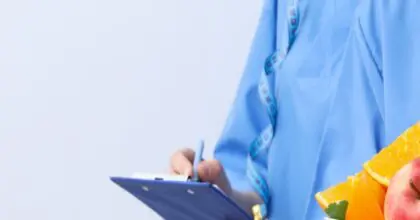Due to a lack of innovation since the postwar 1950’s era, the very phrase ‘Home of the Future’ conjures up retro images of everything from The Jetsons to Presidents Khrushchev and Nixon bickering over which superpower could boast the best kitchen at the notorious American National Exhibition in Moscow in 1959. In reality, the 21st century home of tomorrow will be shaped less by science fiction and more by statistical fact, namely the demographics of occupancy.
Who’s home?
In the developed world over the next 15-20 years the nuclear family will continue to decline proportionally, replaced by a more polarised picture of single and multigenerational households. We’ll also see a growth in single parents and childless couples, and as falling fertility rates curtail the youth demographic, there’s even genuine argument to be made that pet ownership is the new parenthood.
Sticking with traditional notions of family for now, let’s examine the rise of single parents. In the UK, the number of children growing up in single parent households is at a record high of 3 million and in the US they account for 30% of all households, whilst in countries as diverse as Japan and Australia they are expected to grow by around a quarter in the next 10 to 15 years. As a side issue we’re also seeing a growth in single fathers. All of these aspects demand sensitive marketing of household products, as well as an array of real world and digital networking and nannying services and social venues to ease pressure on the home itself.
Furrier, older households
In America, where the birth rate is at a record low, falling fertility rates are already harming businesses like Toys R Us and with childless couples expected to have grown 37% in the first quarter of the millennium, there’s a strong argument for toy and homeware firms to extend in to selling leisure spaces and playthings for grown-ups and their pets. American households with dogs already outnumber those with children, whilst in Japan domestic dogs and cats outnumber children aged 15 or below by around 30%. Pet proof furnishings and playthings and in home gaming and entertainment features can be expected to flourish in the market place going forward.
The ageing of the developed world is also contributing to the rise of single occupancy households. They already account for around a third of German and American homes and between 2005 and 2030, their numbers are expected to have grown by 60% in the UK and 75% in France. Besides a practical need for economic ‘for one’ appliances, this shift will demand more at-home delivery and social services and perhaps even new-build or refurbished re-imaginings of communal, student accommodations.
Smaller, less hungry homes
The rise of single parent and single occupancy homes, set alongside urbanisation and diminishing resources makes a watertight case for the need for smaller homes. Smaller homes – or those housing multigenerational families – will need to maximise space through innovations like toilets that fold in to walls, revivals of once indulgent 60s fashion fads sunken beds and rooms that can reconfigured on a daily basis. The desire for space and the desire for contact might see an increase in matchmaking services like that one proffered by Boston’s My City Gardens’ ‘yard share’ initiative that connects plot-less gardeners with those landowners unable to cultivate it. In an urbanising world of diminishing space and resources, we can expect to see a growth in rooftop agriculture initiatives, such as the Polydome, from Dutch designers Except, which is a self-maintaining ecosystem yielding fruit, vegetables, eggs and honey.
Smarter homes
The desire to save money and resources will of course usher in the era of smartphone enabled home hubs controlling lighting, heating, security and cookers and it can only be a matter of time before home internet and entertainment suppliers extend in to this territory. However, the growing proportions of independent-minded but physically infirm seniors will also drive investment in smart homes, with ‘the internet of things’ offering benign surveillance and gesture control. Utensils that counter hand tremors, cameras that allow children to monitor parents, smart rings that access the internet, chairs and beds that monitor vital signs and robot home helpers will all be driven by the needs – and the finances – of a relatively tech-savvy generation of seniors determined to stay independent for as long as possible.
Material world
Environmental and economic pressures will demand that homes are both affordable and sustainable, and this means building them – and their contents – from sustainable or recyclable materials like wood, building waste or even cardboard. Surfaces must be able to reflect heat, and reduce demand on air conditioning, or absorb light during the day and emit it at night to maximise energy and work towards a future of zero carbon homes. When it comes to construction we’ll see a trend towards offsite building and onsite erection and Shanghai’s Winsun Decoration Design Engineering company has already turned American theory in to action and used a giant 3D printer to build a home from recycled building waste in 24-hours at a cost of just $5,000.
This represents something of a ‘show home’ example for the dream home of the future: sustainable, affordable, fast and made to order. Even Khrushchev and Nixon would have been moved to applaud.
This blog draws on Mintel’s ‘Home of the Future’ Trends presentation as part of a webinar delivered to Mintel clients. If you would like to know what these trends – and others – mean for your business please contact Richard to discuss our trend presentation, project and facilitation services. E-mail: rcope@mintel.com; Twitter: @Richard_Mintel

































